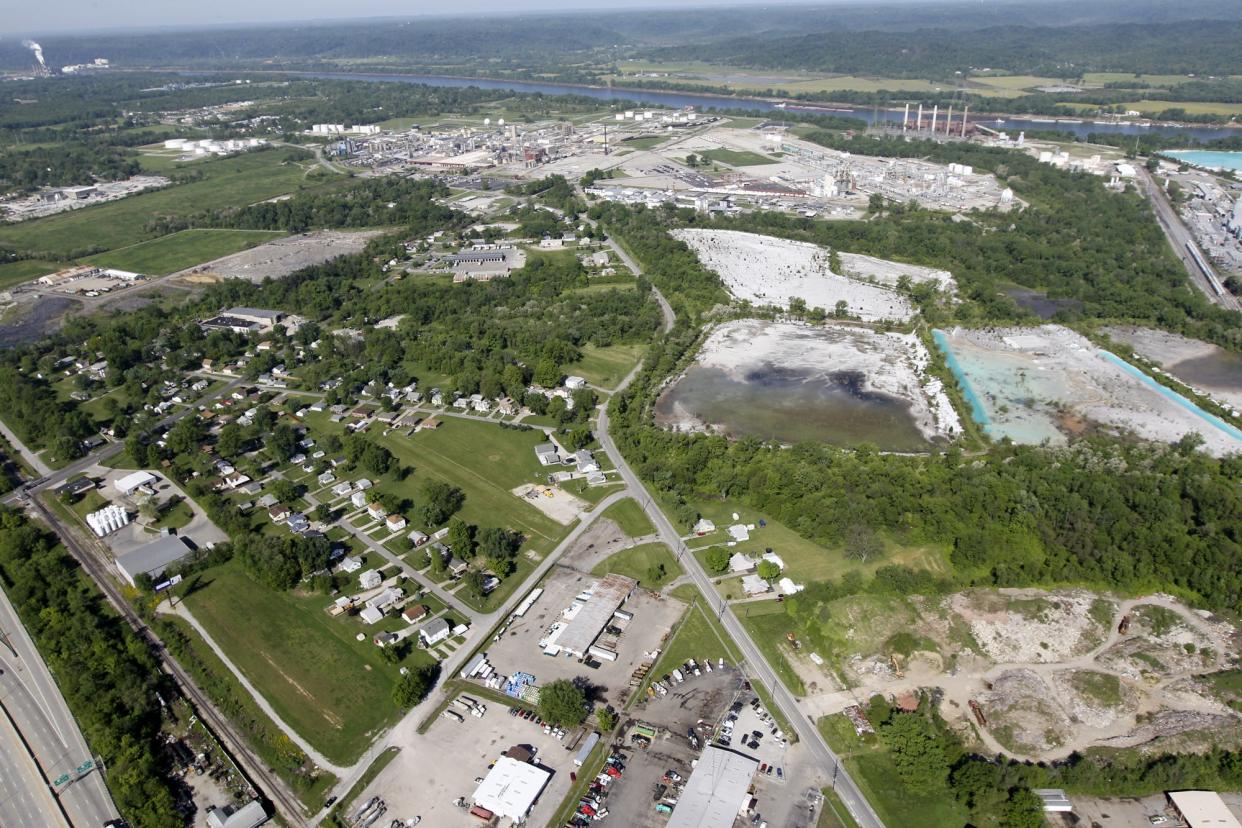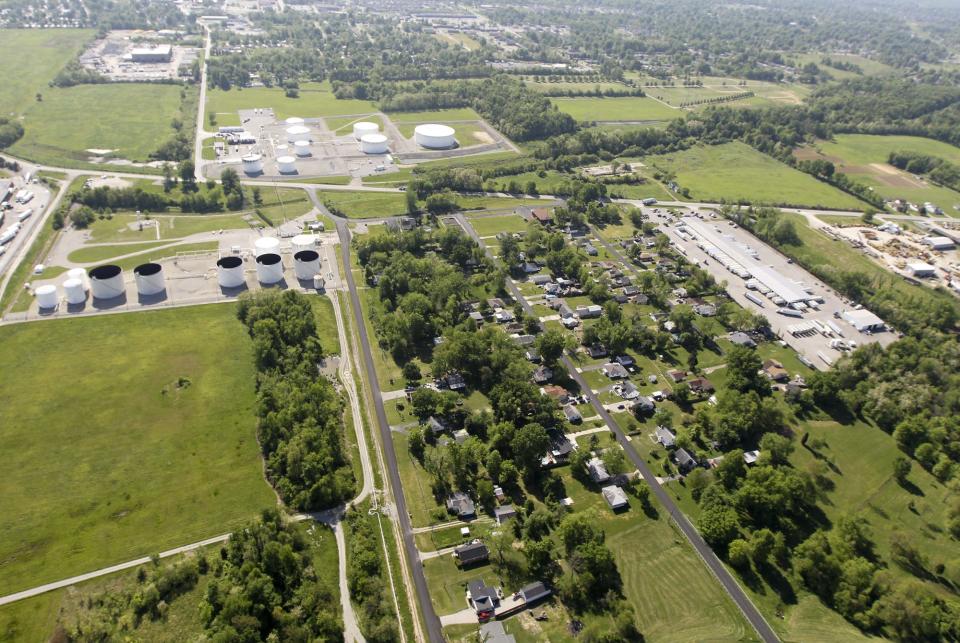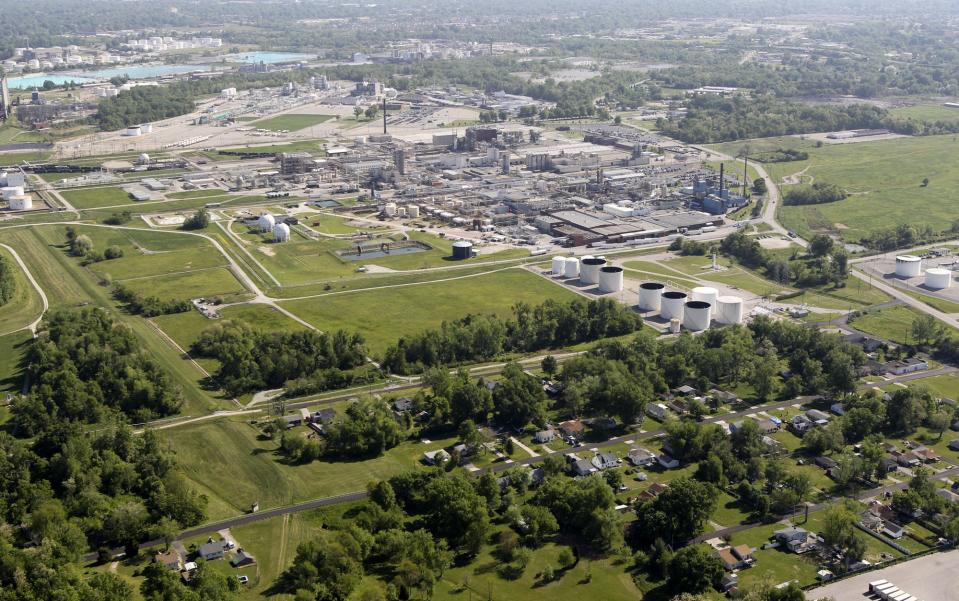During an emergency, Louisville alerts aren't reaching people most at risk. Here's why.

A chemical release on Aug. 5 in Louisville’s Rubbertown corridor triggered an emergency response, and multiple notifications went out to the community as officials monitored a tank leaking hazardous vapors.
Relatively few residents received initial communication of the spill. Those who did were left with more questions than answers, with no information on what chemicals were released, what health risks the chemicals posed, or how to stay safe from them.
One alert, announcing a closure of Interstate 264 during the incident, referred cryptically to a “civil emergency” rather than a chemical release, stirring more confusion.
LENSAlerts, short for Louisville Emergency Notification System, are a primary line of official emergency communications for the city and surrounding counties. They’re sent out for missing persons, severe weather, traffic disruptions, chemical spills and more, and can reach cell phones, landlines and email inboxes.
But often, these communications fall short. In times of emergency, some residents say the alerts are too vague, lacking information relevant to public health and safety and leaving community members to find answers themselves.
And seven years after the city rolled out the system, enrollment data shows only a small margin of Jefferson County residents are receiving LENSAlerts at all. Emergency officials have especially struggled to grow enrollment numbers in the fenceline communities abutting the Rubbertown area, where risk from chemical spills is disproportionately high.
'The community has a right to know'
The Aug. 5 incident involved a Metropolitan Sewer District tank leaking a cloud of TerraStat 15-OF, a mix of potentially hazardous chemicals including hydrogen peroxide, acetic acid, peracetic acid and sulfuric acid, officials told a Courier Journal reporter at the time.
The initial LENSAlert that morning reported “no danger to the public” from the escaping vapors, and did not tell residents what chemicals were in play. But officials soon determined the chemical tank was deteriorating and sent out a shelter-in-place order for dozens of surrounding homes.
Some residents criticized emergency officials for not pairing that alert with instructions on how to shelter in place, what chemical had spilled and potential symptoms from exposure. The shelter-in-place order was lifted by another alert more than four hours later.
Attica Scott, former state representative and director of special projects at Forward Justice Action Network, spent some of that afternoon calling and texting people, checking in and making sure they knew about the spill and the shelter-in-place order.
“Most people had no idea because they’re not signed up for LENSAlert, so they didn’t get any kind of alert,” she said. “And then people, of course, were stressed and full of anxiety because now they’re wondering, ‘OK, what does this mean? Am I gonna get cancer because I’m breathing in whatever the toxic emissions were from this chemical spill?’”

The LENSAlert system, which costs Louisville Metro and the surrounding counties about $200,000 a year, has a character limit of 160 to accommodate all types of enrolled devices, according to Emergency Services systems analyst Cody Ashbaugh. This means messages are short — and often devoid of context.
LENSAlerts on chemical spills or hazardous material incidents do not identify the chemicals in question, leaving concerned residents to search social media, local news, or investigate for themselves.
Following the lack of details on the Aug. 5 spill, Eboni Cochran, co-director of the grassroots Rubbertown Emergency ACTion group and Chickasaw resident, went to the Air Pollution Control District and asked where she could find more documentation to understand what had happened. They told her she needed to file a request under Kentucky's open records law.
“I don’t think these should be open record requests. I think that if you’re putting my life in danger, if you’re putting the lives of community members in danger, they shouldn’t have to go through a whole process in order to gather documents,” Cochran said. “The community has a right to know what they’re being exposed to and in what quantities.”
Low enrollment in areas bordering Rubbertown
About 6% of Jefferson County residents receive LENSAlerts across web, app and text-based enrollments as of August, according to Louisville Metro Emergency Services data.
The 17,000 text-based enrollments don't include general location data, but nearly 30,000 web and app enrollments do. This data shows lower rates of enrollment in the ZIP codes bordering Rubbertown, with about 2% to 3% of people in those areas signed up online with their addresses.
“That’s embarrassing,” Scott said, and an indicator that emergency officials have lots of outreach and public engagement left to do.
Introducing the tool to communities "really doesn’t take rocket science," Cochran said, adding that the city has marketing professionals throughout its ranks, and should be working more with local community centers and neighborhood associations to get the word out. She's seen a lack of effort by the city to reach her community, and in some cases, “just pure laziness.”
But Jody Meiman, director of Louisville Metro Emergency Services, said the agency has done what it can to encourage enrollment.
“It’s definitely not been a lack of effort on our part,” he said, pointing to public engagement partnerships with Metro Council members, the Office for Immigrant Affairs, Autism Speaks and other organizations, as well as outreach through local media and billboards.
The Courier Journal asked Meiman about agency efforts to work with grassroots, community-led organizations, often more trusted by local residents, to help amplify the utility of LENSAlerts for public safety. He said he doesn't understand the lack of trust in his agency.
“I know we're local government, but how do you not trust somebody trying to get you information on some type of disaster that may be going on? I don't understand the mentality," he said. "I don't understand why that trust shouldn't be there."
Distrust in local government
Low LENSAlert enrollments in West End neighborhoods are a symptom of the long-standing disconnect between Metro government and residents, community leaders said.
“There needs to be more partnership,” Scott said. “Louisville Metro government cannot operate in a silo and work by itself and think that’s enough, particularly when there’s also an issue of lack of trust of local government.”
Shauntrice Martin, a Parkland resident, said she was encouraged to sign up for LENSAlerts at a booth at a resource fair several years ago, but wasn’t able to get clear answers from the official about how her private data would be used after she enrolled. She didn't sign up.
Without trust in emergency communications, some turn to people like Cochran and other members of trusted local groups to keep them informed about potential chemical hazards in their community.
“I’ve definitely gotten more information from her than from the city at all,” Martin said.
Any personal information collected in the LENSAlert sign-up process — from medical information to pets — is stored and encrypted to the same degree bank information would be, Ashbaugh said. The information is only accessible to the agency when the registered user calls 911, and even then only for 45 minutes, he added.
City agencies should work with local groups to reach more people and improve emergency communications, said Chanelle Helm, a core lead organizer with Black Lives Matter Louisville and a Shively resident. And Cochran recommended the city employ teens who live in the neighborhoods to canvass door-to-door for alert sign-ups.
"Grassroots organizations get those jobs done a lot faster," Helm said. "We're already in communities with our folks."

Even those who aren’t signed up for LENSAlerts can still receive notifications from the separate Integrated Public Alert and Warning System, which does not require enrollment and is reserved for select urgent messages, like shelter-in-place orders or Amber alerts, for example.
But if a chemical spill or hazardous material incident doesn’t trigger an IPAWS alert, a vast majority of residents living close to the incident would likely not receive any emergency communication from the city, given low LENSAlert enrollment.
And offering clear and accessible emergency communications around chemical hazards is becoming more and more needed, residents say.
“It’s imperative that they do that, with the recent amount of emergencies that have taken place,” Helm said. One day after the MSD chemical spill, residents were alerted of a separate “hazardous materials incident” at American Synthetic Rubber Co., another facility in Rubbertown.
"Recent events in Vermont, Maui and Southern California have again elevated the need for fully informative and accessible emergency alerts," said Monica Unseld, founder of Until Justice Data Partners and a public health professional, in an email. "There will be more chemical and natural disasters. They will hit more zip codes. We must have a right to know how to protect ourselves and our loved ones."
Sign up for LENSAlerts on the Louisville Metro Emergency Services website or by texting "LENSAlert" to 67283.
Connor Giffin is an environmental reporter for The Courier Journal and a corps member with Report for America, a national service program that places journalists in local newsrooms to report on under-covered issues. The program funds up to half of corps members’ salaries, but requires a portion also be raised through local community fundraising. To support local environmental reporting in Kentucky, tax-deductible donations can be made at courier-journal.com/RFA.
Learn more about RFA at reportforamerica.org. Reach Connor directly at cgiffin@gannett.com or on Twitter @byconnorgiffin.
This article originally appeared on Louisville Courier Journal: At-risk areas, much of Louisville not signed up for emergency alerts

